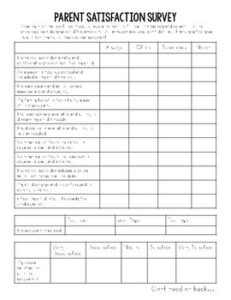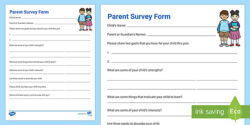Navigating the teenage years can feel like an Olympic sport for both parents and teens. It is a period of immense growth and change, often accompanied by shifting boundaries, evolving expectations, and the occasional power struggle. While this journey is a vital part of development, it can also strain communication and understanding within the family unit, leaving everyone feeling frustrated and misunderstood. Establishing clear guidelines and expectations becomes paramount to maintaining peace and fostering an environment where teens can thrive responsibly.
This is where a structured approach can make all the difference. Imagine a tool that helps everyone get on the same page, reducing arguments and promoting accountability. That tool is a behavior contract. Far from being a punitive measure, a well-crafted parent teen behavior contract template serves as a roadmap for expectations, responsibilities, and the consequences and rewards that naturally follow certain actions. It is a proactive step towards building a more harmonious household based on mutual respect and understanding.
Why a Behavior Contract Can Be a Game-Changer for Your Family
Implementing a behavior contract is not about imposing rules; it is about creating a collaborative framework for family life. For parents, it offers clarity on how to address behavioral concerns consistently, without resorting to constant nagging or last-minute arbitrary decisions. For teens, it provides a clear understanding of what is expected of them, the boundaries within which they can operate, and the specific outcomes of their choices. This transparency is key to reducing conflict and fostering an environment of trust.
One of the greatest benefits of a behavior contract is its ability to empower both parties. Teens learn valuable lessons in responsibility and self-governance when they know exactly what they need to do to earn privileges or avoid negative consequences. Parents, in turn, feel more equipped to handle challenging situations with a predefined plan, leading to less emotional exhaustion and more effective discipline. It shifts the dynamic from a constant battle of wills to a structured system of mutual accountability.
Key Elements of an Effective Contract
When developing a contract, thinking through its core components is essential. A truly effective agreement is comprehensive yet easy to understand. It should outline specific behaviors, both positive and negative, and their corresponding outcomes.
* Clearly defined expectations regarding chores, schoolwork, curfew, technology use, and respect for family members.
* Specific, predetermined consequences for not meeting expectations, applied consistently.
* Clearly stated rewards or privileges for consistent adherence to the contract.
* A set schedule for reviewing and potentially revising the contract, ensuring it remains relevant.
* Mutual agreement and a formal signing by all involved parties, signifying commitment.
These elements work together to create a robust framework. The “why” behind consequences is to teach valuable life lessons about cause and effect, rather than merely punishing. Similarly, rewards are not just bribes, but acknowledgements of effort and responsibility, motivating teens to maintain positive behaviors. This structured approach helps teens internalize the understanding that actions have consequences, a crucial skill for adulthood.
Furthermore, the collaborative nature of creating a contract cannot be overstated. It is not something dictated by parents and simply signed by the teen. When a teen is involved in drafting the terms, they take greater ownership of the agreement, making them more likely to abide by it. This collaborative process is where the real magic happens, transforming potential conflict into an opportunity for growth and understanding. A well-designed parent teen behavior contract template should always encourage this shared responsibility. It is a living document, subject to review and revision as your teen grows and family needs evolve, making it a flexible tool for ongoing communication.
Crafting Your Own Parent Teen Behavior Contract Template: A Step-by-Step Guide
Embarking on the journey of creating a behavior contract should begin with an open and honest discussion involving your teen. This is not about presenting a finished document for signature, but about inviting their input and perspectives from the very start. Ask them what they believe are fair expectations for their responsibilities and privileges, and what consequences they think are reasonable for not meeting those. This initial dialogue lays the groundwork for a contract that feels fair and achievable to everyone.
Once you have a general understanding of the issues you want to address, whether it is improving grades, contributing more to household chores, or adhering to a specific curfew, it is time to get specific. Vague terms like “be more responsible” are difficult to measure and enforce. Instead, define exactly what “being more responsible” looks like in concrete actions, such as “completing homework before dinner” or “taking out the trash every Tuesday morning.” This precision eliminates ambiguity and sets clear targets.
Here are some practical steps to guide your drafting process:
* Set realistic expectations: Ensure the behaviors and consequences are age-appropriate and attainable for your teen.
* Be specific with behaviors: Clearly state what needs to be done, when, and how. Avoid generalizations.
* Define consequences clearly: Outline specific, logical consequences for each infraction, ensuring they are not overly punitive and can be consistently enforced.
* Outline a rewards system: Detail privileges or incentives for meeting expectations, making them meaningful to your teen.
* Include a review date: Decide how often the contract will be revisited and updated, perhaps monthly or quarterly, to adapt to changing needs.
After the contract is drafted, read it aloud together to ensure everyone understands and agrees to all terms. Once mutually agreed upon, have everyone sign and date the document. Post it in a visible location, like the refrigerator or a family bulletin board, as a constant reminder of the shared commitments. Consistency in applying the terms is crucial for the contract’s effectiveness. Both parents and teens must uphold their ends of the agreement for it to truly foster positive change.
The beauty of using a parent teen behavior contract template lies in its adaptability and focus on proactive communication rather than reactive conflict. It offers a structured way to navigate the often turbulent waters of adolescence, equipping both parents and teens with tools for better understanding, greater accountability, and ultimately, a more respectful and connected family life. This foundational document can become a cornerstone for teaching important life skills and strengthening family bonds for years to come.



